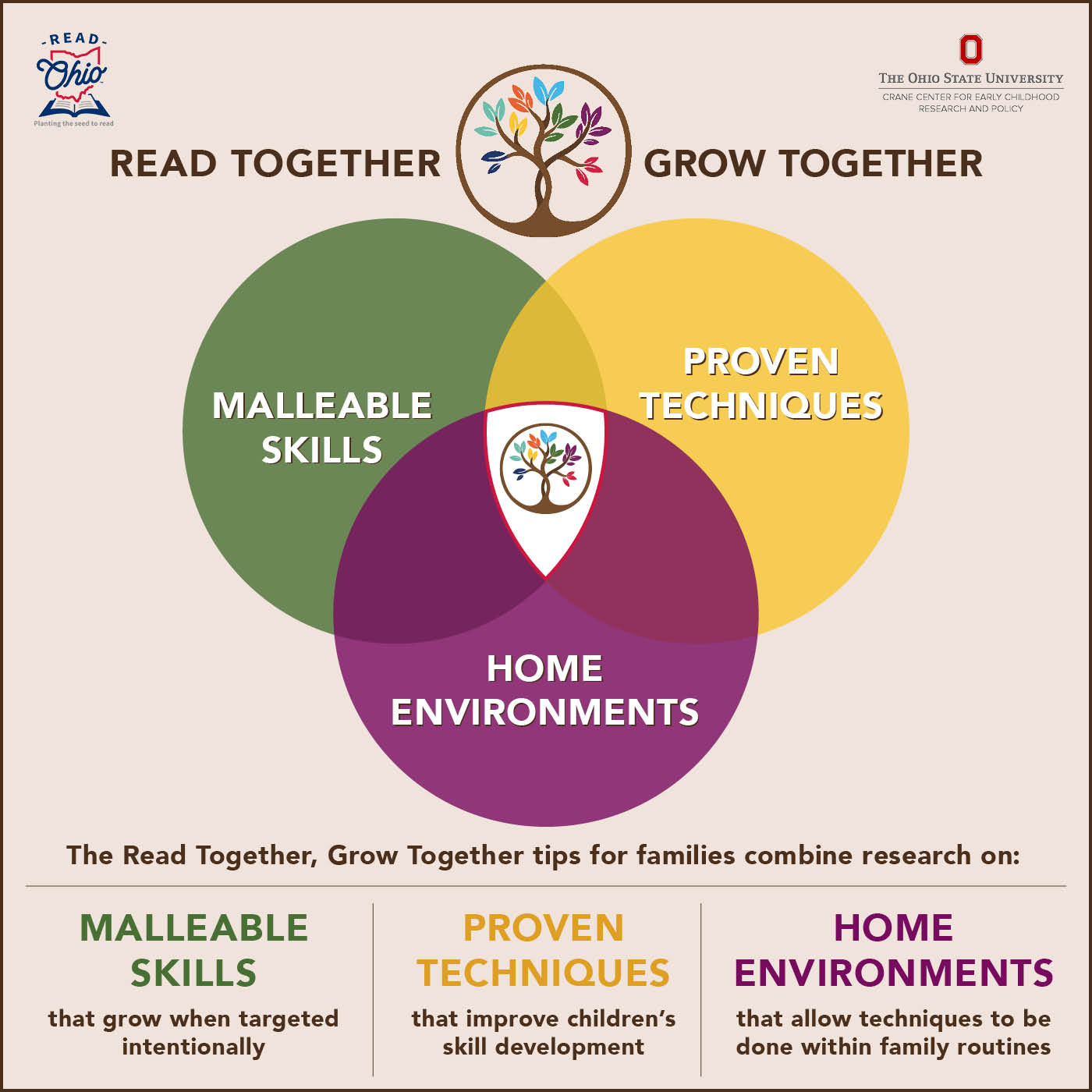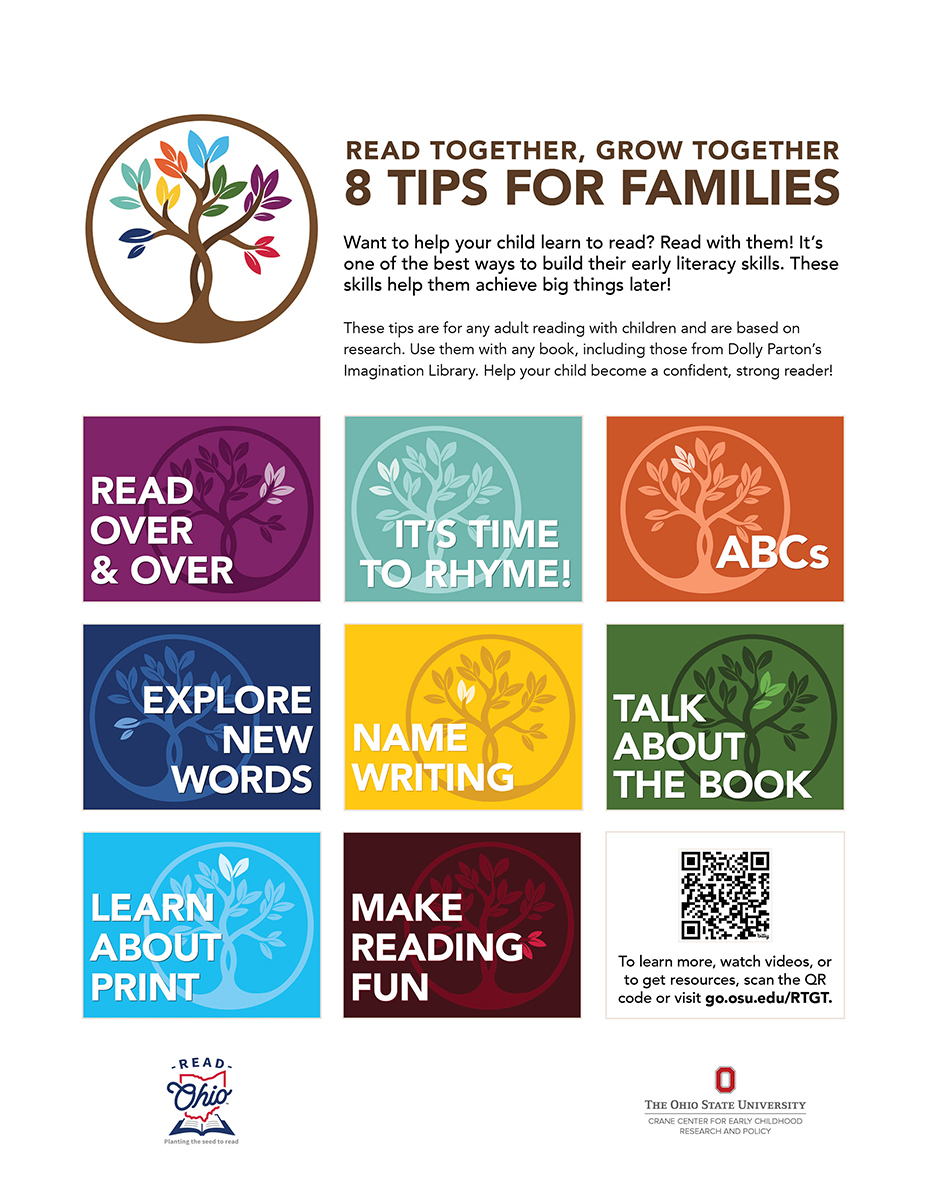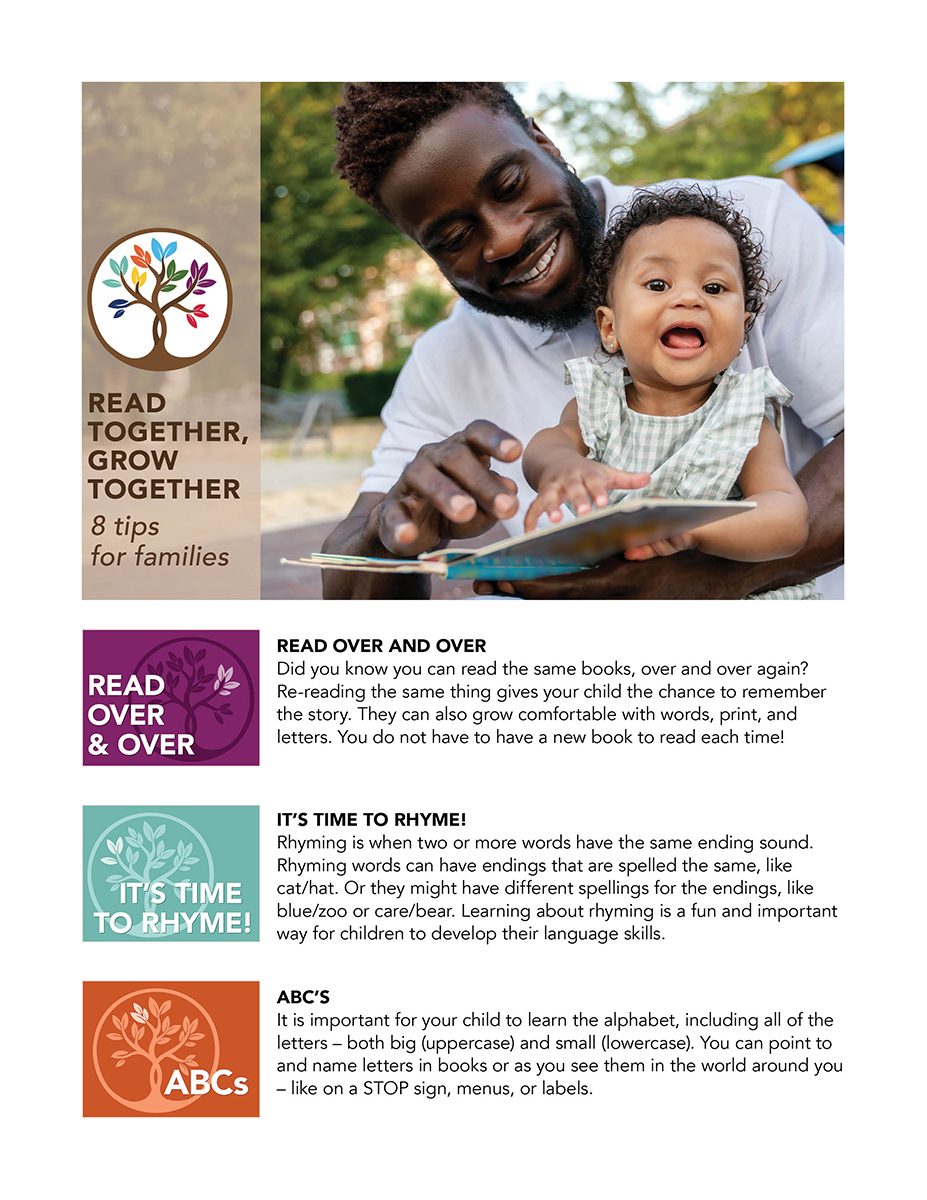
Reading with your child is one of the best ways to build their literacy skills.
Did you know there are simple tips you can use when you read together?
These tips are for every adult who shares the joy of reading with a child. They are based on best practices and can be used with any books that you have.
Want more books at home? Ohio families can sign up for Dolly Parton’s Imagination Library. Your child will receive a free book every month from the time they are born until they turn 5 years old.
Learn more about how reading with your child now builds skills they will need later, even as an adult!
Watch a quick video to hear more about the 8 Read Together, Grow Together Tips.
8 Tips for Families
Make the most of the time you spend reading with your young child!

You may have heard that it is important to read to your child. But did you know you can read the same books, over and over again? Re-reading the same thing gives your child the chance to remember the story. They can also grow comfortable with words, print, and letters. You do not have to have a new book to read each time!

Rhyming is when two or more words have the same ending sound. Some examples of rhyming words are:
- CAR/STAR
- RED/BED
- DOG/FROG
Rhyming words can have endings that are spelled the same, like cat/hat. Or they might have different spellings for the endings, like blue/zoo or care/bear.
- CAT/HAT
- TREE/BEE
- HOUSE/MOUSE
- BLUE/ZOO
- GREEN/BEAN
- YELLLOW/FELLOW
- PINK/THINK
- CARE/BEAR
Learning about rhyming is a fun and important way for children to develop their language skills.
Beyond shared storybook reading
To help your child learn about rhyming when you aren’t reading together, try:
- Singing songs and reciting nursery rhymes with your child. Many songs and nursery rhymes use rhyming words.
- Playing rhyming games. There are many different rhyming games that you can play with your child, such as “I spy” and “Simon Says.”
- Reading books with rhyming words. There are many children’s books that use rhyming words. When you read to your child, point out the rhyming words and ask them to identify them.
- Helping your child to make their own rhymes. Encourage your child to come up with their own rhyming words. You can also help them to make rhyming sentences and poems.
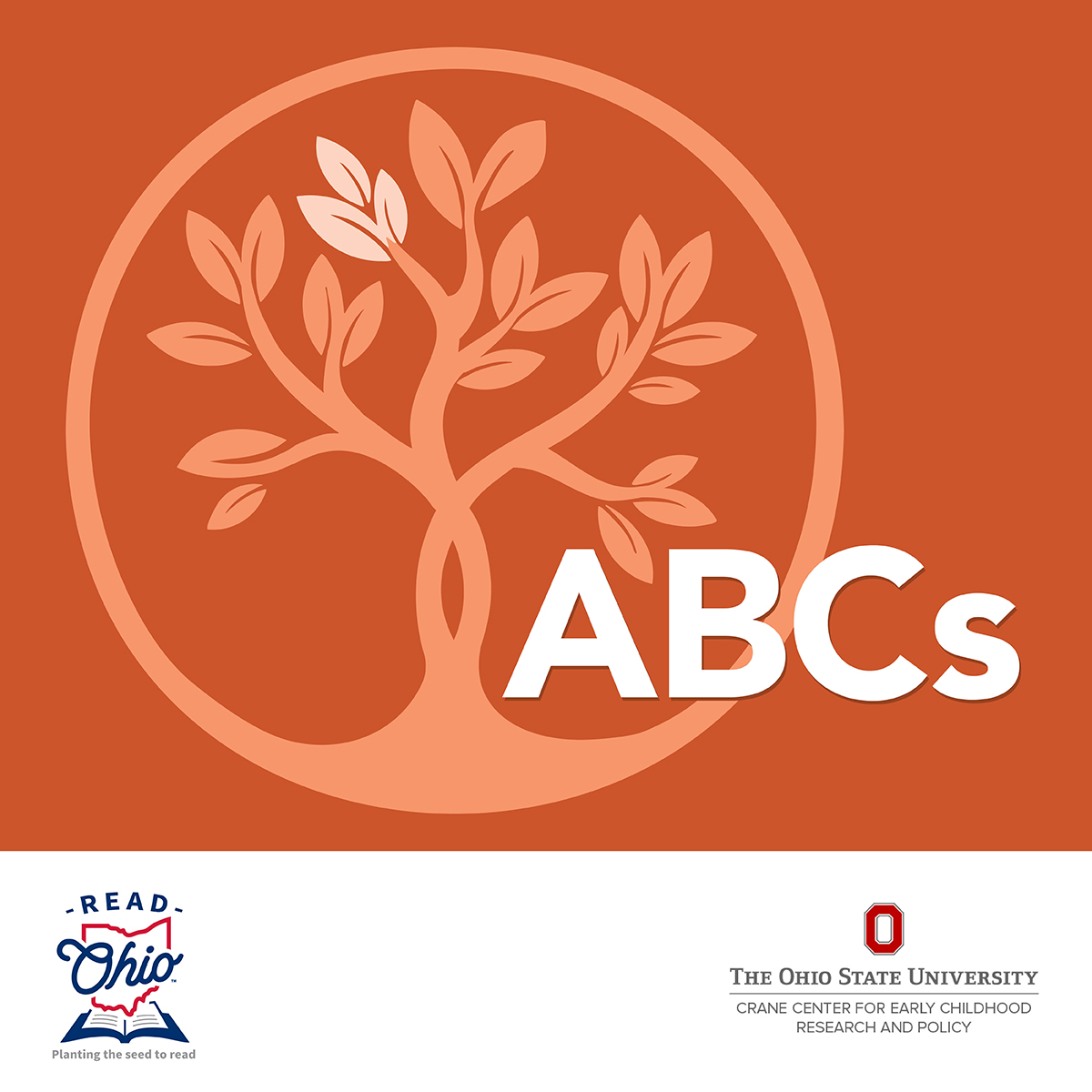
It is important for your child to learn the alphabet, including all of the letters – both big (uppercase) and small (lowercase). There are a few ways you can help them practice.
- Point to and name letters in books while reading with your child.
- Show them letters that are in their name.
- Read alphabet-themed books.
- Sing the alphabet song.
- Point out letters in the world around you – like on signs (a STOP sign), menus, or labels.

Hearing and talking about new words – or vocabulary – will help your child grow their language skills. Children learn vocabulary in many ways. They hear new words from adults or other children, or they see or hear new words from books. They also learn new words by experiencing new things and talking about them.
Here are ways you can help your child explore new words:
- Talk to your child often. Talk about your day, describe what you are doing, and ask your child questions.
- Talk about pictures in the story you are reading, and ask your child questions. Don’t be afraid to use “big” words as you describe the story.
- Encourage your child to ask questions.
- Also tell them that it is OK if you do not know what a word means. “Let’s find out!”

Writing their name is a key skill for your child to learn. There is no rush – it takes practice for a child to learn how to write their full name. Even very young children love to pretend to write! Here are some ways to help them practice no matter their age:
- Show your child how to write their name. Write it slowly, and explain how you are making each letter. “This is a large B, and now the rest of the letters I’m going to write as small letters.” B-r-a-n-d-o-n.
- Give them crayons, pencils, markers, and other things to write with. You can even use shaving cream, Play-Doh, or other materials.
- Talk out loud about the letters in their name to help them make the connection between print and their own name. “That word begins with an “s.” You have an “s” in your name!”
- When they are ready, they can start trying to write their own name – even just the first letter or two. Encourage them even if it is scribble. As they get older, they will learn how to write it neater.
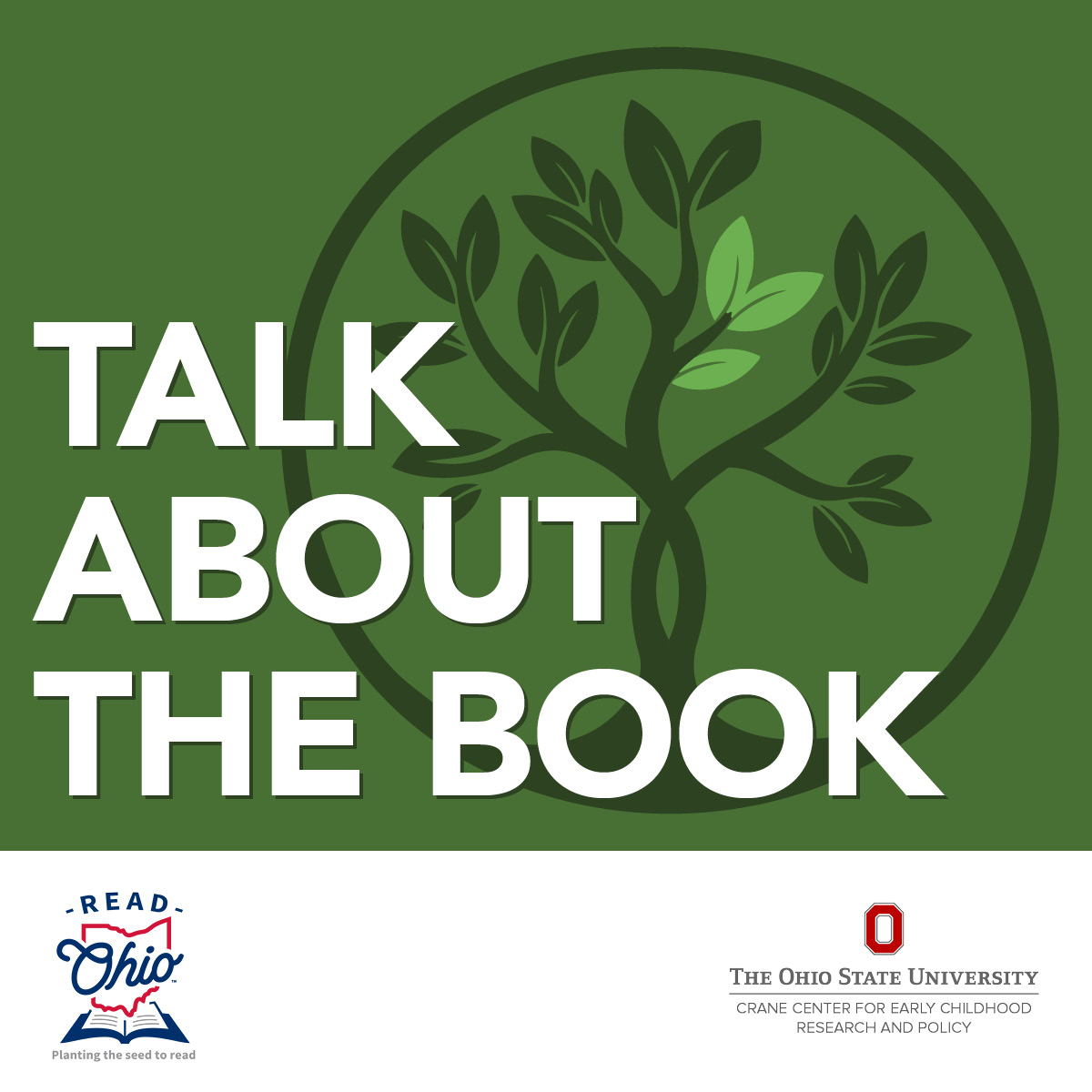
Even after you finish a book, you can keep talking about it. Talk about the people and animals. Or talk about questions your child asked. Talking about the book will help your child understand the story and its meaning. It will also give them a chance to practice using new words or ideas.
Talking about the book is also a great way to bond with your child.
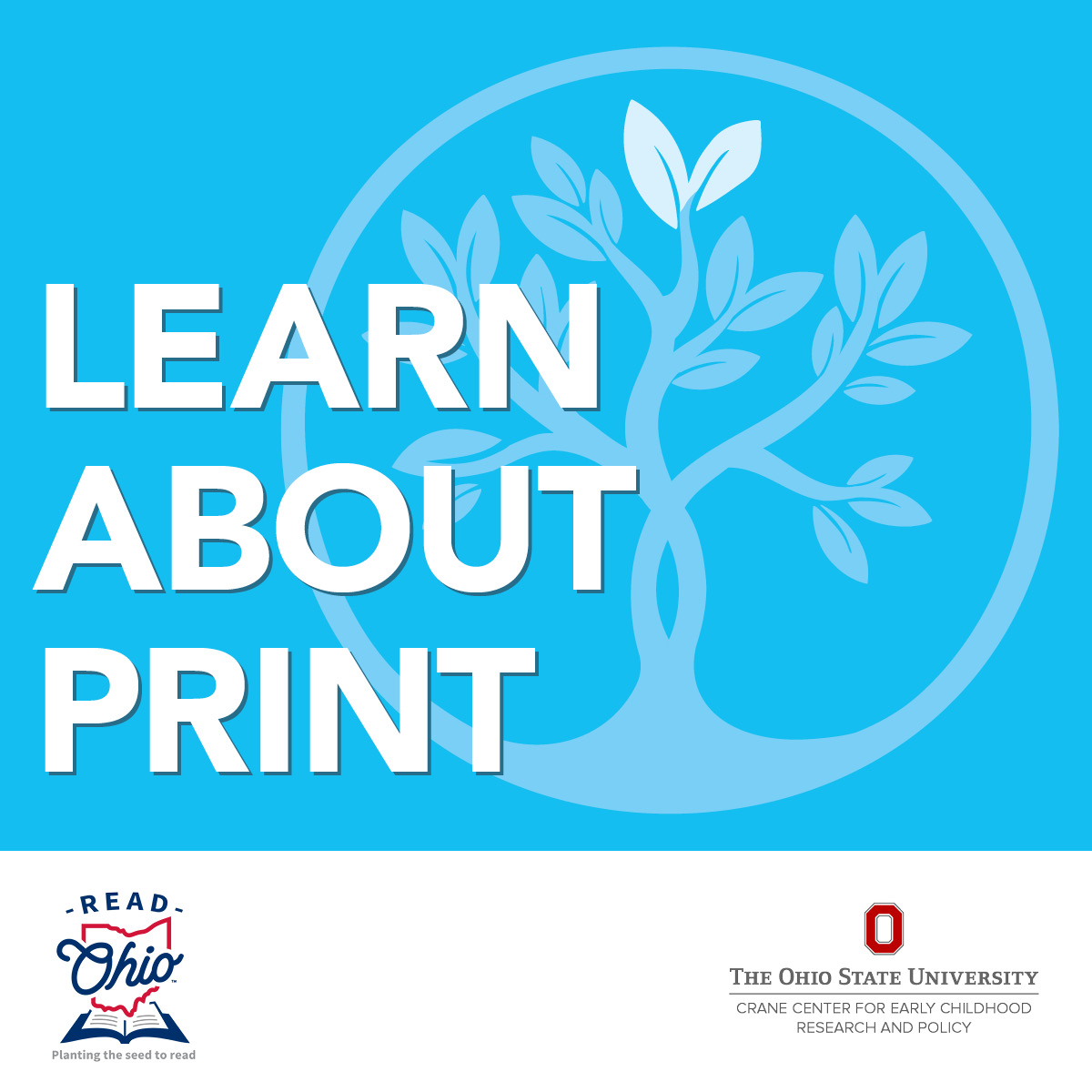
To help your child learn that print has meaning, point to the text when you read. You can track the words with your finger. Or talk about the text as you see it on the page. For example, “I see many words on this page,” or “I see only one word on the page,” or “There is a capital ‘B’.”
You can also tell them about different parts of the book. “This is the front cover; this is the back cover; here is how I hold the book and turn the pages.” Show them how to read words from left to right, and from top to bottom on the page. You can also show them other parts of print, like spaces between words or periods at the end of the sentence.
Children with strong print knowledge are better able to learn how to read and write.
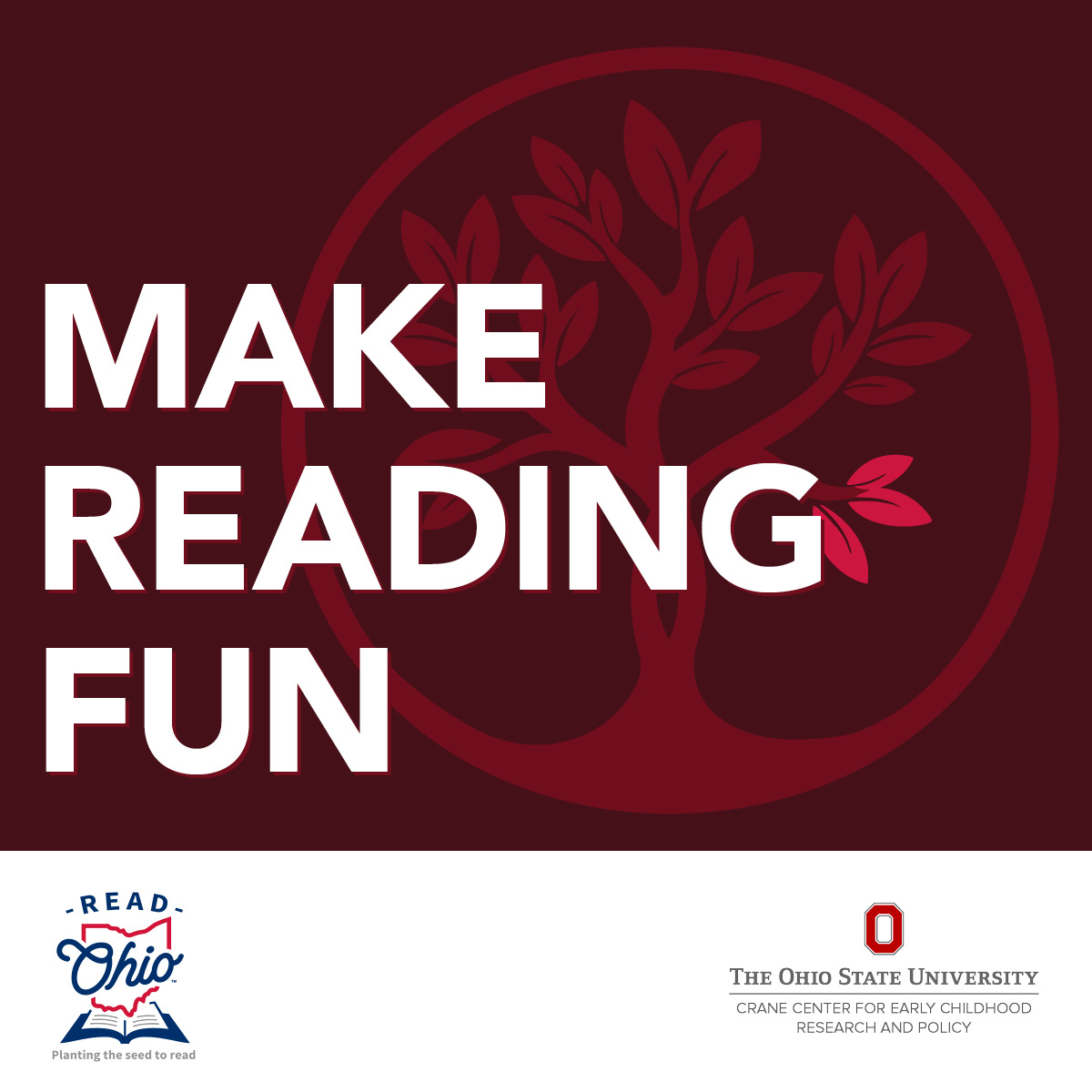
Most of all, reading with young children should be fun. There is no perfect way to read with your child. The important thing is that you read often. Give your child many chances to hear stories and to practice all these reading skills. Use these tips to help make reading fun and enjoy to shared reading:
- Choose books that match your child’s age and interests.
- Read the same books over and over so they have a chance to grow their skills and confidence.
- Make a cozy reading spot in your home so you can snuggle up and read together.
- Read with silly voices. Vary your tone of voice or use different faces to bring the story to life.
- Ask questions and let your child ask questions.
- Make it a positive experience.


